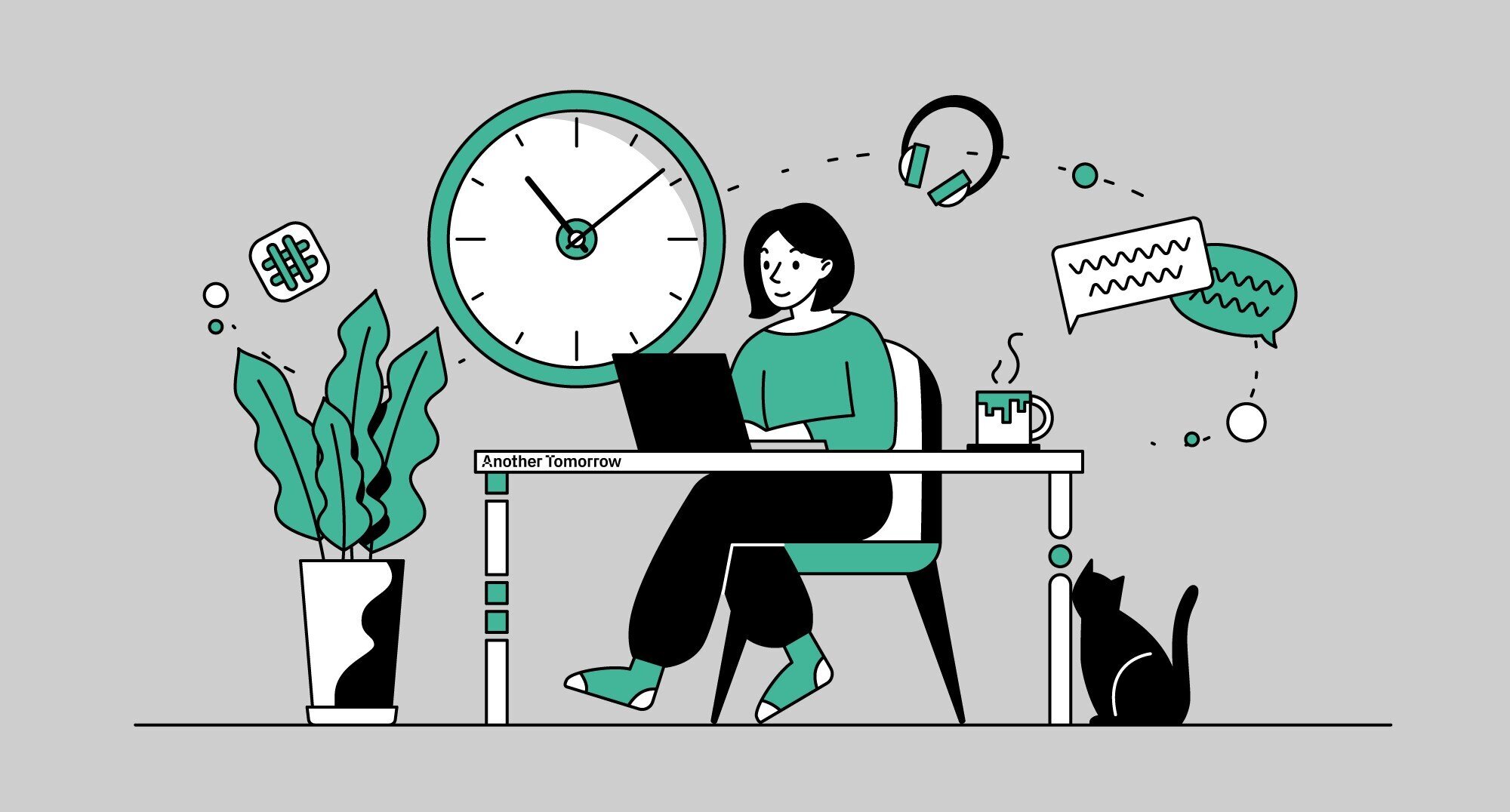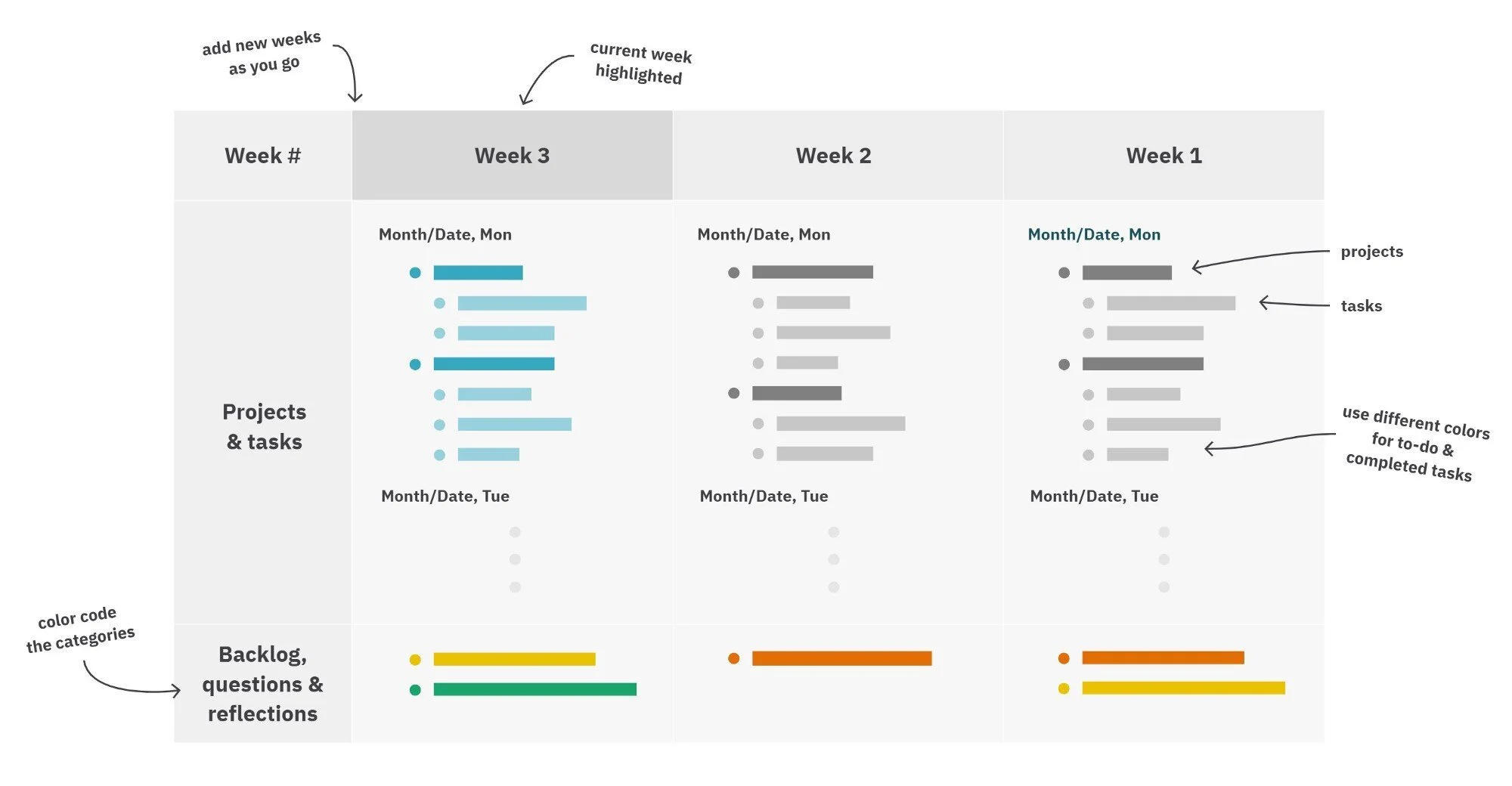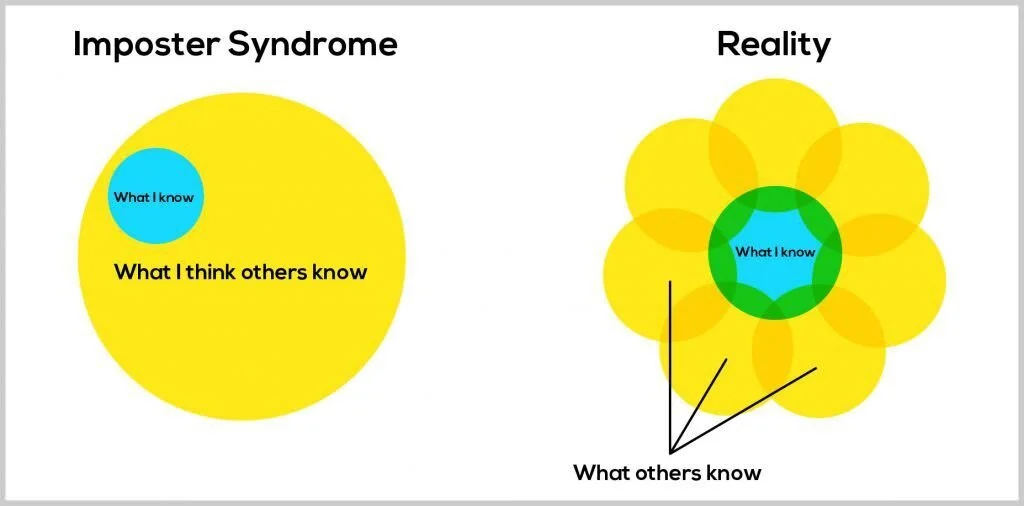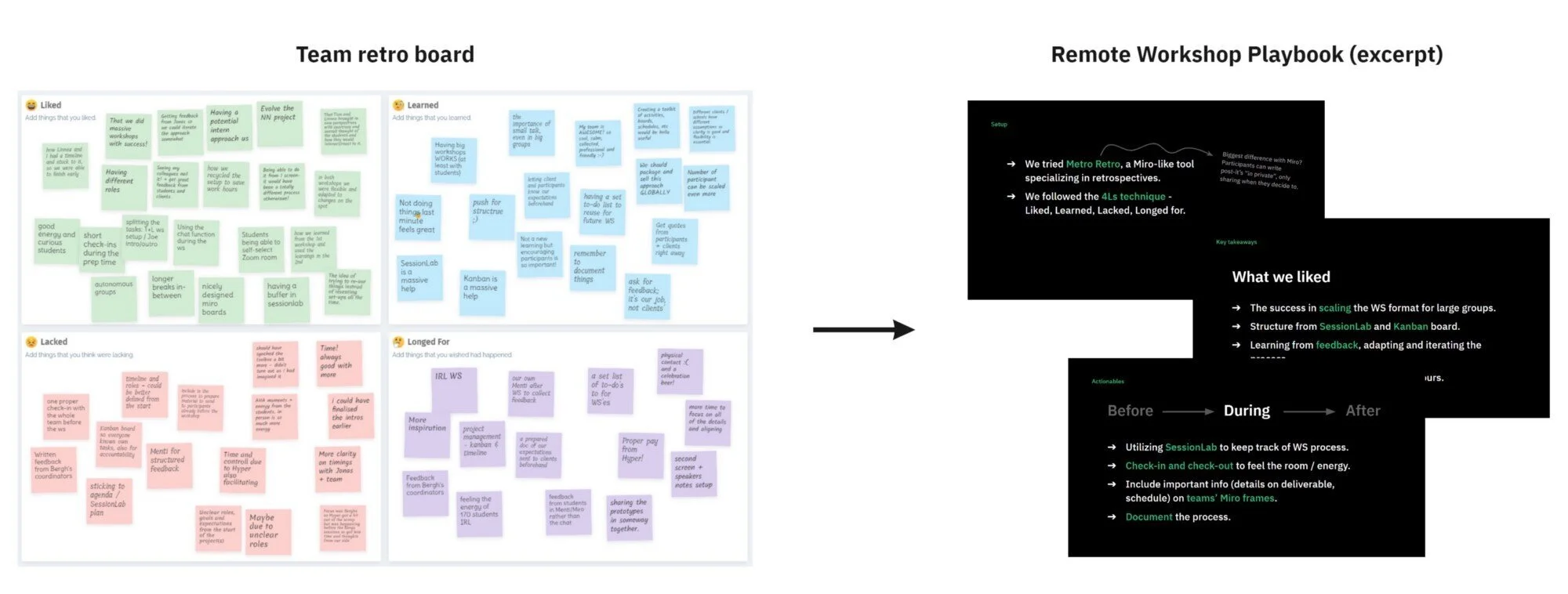8 Things to Help You Make the Most of Your Remote Internship
Illustration: Tian Gan
When I signed the contract back in April 2020 for my UX design internship at Another Tomorrow, I had no idea how long the pandemic would last or that I would be working almost fully remotely — in my first three months of internship, I spent a total of three days at the office, which was all in my first week.
The internship is the time where one learns the ins and outs of a new career path, develops their skillset, and builds new professional and personal relations. But for an internship taking place remotely, with the in-office aspects significantly cut down or even eliminated, how can one maximize their experience, prove that they deserve a full-time role, and learn the most to help further their professional development?
After the initial months as a remote intern, here are some things I have learned. (You might even find that they apply not only to internships or remote working but to managing your work-life in general.) Hopefully, they will help you embark on your journey with structure and confidence.
1. Create a living document of goals and expectations; revisit them regularly.
Start your internship on a proactive note. By setting goals and expectations from the get-go, you lay a solid foundation that will benefit you and your employer in the long run.
Remember: expectations should be mutual, covering both what your responsibilities are as an intern, and what your mentor and company could do to help you reach your learning goals. Your time is important; setting boundaries for what you want or don’t want to do is crucial for the company to understand your needs, and for the collaboration to feel natural. It’s a great way to temp check the company, too.
Here are some questions to get you started:
What skills or knowledge would I like to learn?
What kind of projects/tasks do I expect to work with?
What are my biggest challenges and how do I plan to manage them?
What do I expect from my mentor/the company?
Once you draft the document, schedule a meeting when you and your mentor look at it together, and see if anything needs to be revised, ideally before your internship starts. After that, make calendar reminders for yourself to revisit the document, reflect, and adjust throughout the whole internship period.
2. Keep track of your tasks, progress and achievements.
You know the feeling when you finish a big project lasting a few months, but when you look back, trying to outline what you have done and achieved, it’s all a blur?
This is why I’ve made it a habit to keep a work log, where I document in a weekly format —
projects and detailed tasks,
my own backlog, i.e. less urgent tasks that I will get to when I have free time,
questions that I want to discuss with my colleagues or mentor, and
my own reflections.
Evernote is the note app I use, but you can use any note-taking app that allows you to create tables. I always have my work log open during the workday, and it looks something like this:
Once you start logging your work, you can also go the extra mile by categorizing projects under focus areas every few weeks. I use Miro for this so it’s visual and easy to move things around. This helps your mentor understand what your responsibilities and achievements are, and will make it a lot easier when you update your résumé/LinkedIn work history, and when you fill your portfolio.
3. Accept the lack of confidence or fear of failure — but do it anyway.
Impostor syndrome made its presence known right after I started my internship. Granted, I was at the beginning of my transition down a new career path — from graphic design to UX design — and I rationally understood that nobody expected me to know everything. But how surely my mentor was going to discover any time now that I was actually a fraud among my extremely competent and smart colleagues?
What helped in the end? Work. The more responsibilities I was trusted with, and the more feedback I got from my colleagues, the better I could harness my impostor syndrome as a driving force instead of a crippling sense of self-doubt.
4. Don’t be shy — show who you are.
Yes, it is easy to fall back to being the quiet intern, especially when you are the most junior person in the room. But there are so many benefits to letting people know who you are as a person. It is easier for them to connect to you, and to have a bond and a level of psychological safety that is otherwise impossible.
During the Monday morning stand-up where I was first introduced to the team, I made sure to talk about my academic and professional background, as well as some personal details — my non-work-related passions, and things my colleagues are welcome to talk to me about. This also made it easier for me to ask my colleagues follow-up questions after they introduced themselves, to make the team introduction feel more personal and intimate.
Showing your personality is admittedly harder when you don’t have any face-time with your colleagues. This means that you need to make the extra effort even in virtual work-life — ask people how they are, chat about things outside work, and take the initiative to connect with your colleagues in virtual social events or socially-distanced walk & talk’s.
5. Manage your time, ruthlessly, and thoughtfully.
No matter if you are interning remote or in-office, your mentor won’t be responsible for every minute of your 8 hours, and it’s very unlikely that you have the exact amount of work to fill those hours. This means that your remote internship might feel more project-based than hourly, requiring you to practice discipline and self-leadership to meet the deadlines while striking a work-life balance.
While flexibility is one of the perks of remote working, your quality of work should not be affected. After writing down all my daily tasks in the work log illustrated above, I assign a rough time for each task, then set a timer in my browser as I work to tick them off. The timer helps me limit distractions and treat my working time seriously. If it turns out that I have extra time for a long walk that day, I mark my calendar so people know that I’m away from the keyboard, and go enjoy the fresh air (and precious sunshine at this time in Stockholm).
6. Go a step beyond.
Depending on where you are interning and who your mentor is, tasks will be communicated and assigned to you differently. Regardless of what’s expected of you, is there anything more you can do that could help your colleagues, improve how the company works, or help your learning goals?
Start by observing the way work is done around you. Is there anything missing that people could potentially benefit from? One thing I have noticed is that at Another Tomorrow, since we are such a small agency of interdisciplinary teams juggling several intensive projects at the same time, there are times when productivity triumphs over reflection and celebration. So when my team wrapped up two big remote workshops, I took the initiative to design and facilitate a retrospective session using Metro Retro, after which I summarized the takeaways in a remote workshop playbook so that we learned from our experience and streamlined future processes.
From our reflections to curated learnings and actionables
Apart from processes like this that can help the company in the long run, it’s also a good habit to walk the extra mile by engaging in projects outside your area of responsibility; this helps you constantly strengthen your network and explore new opportunities.
7. Practice over-communication with your mentor and colleagues.
When you don’t have the benefit of physical proximity, asynchronous communication with multiple digital tools becomes the new normal. While this can mean higher-quality communication, less distraction, and more flow state at work, it also requires more clarity and thoughtfulness to mitigate potential misunderstanding and frustration.
Some things that I do to communicate better asynchronously in my remote internship include:
Clear my intentions. When I craft a message to a colleague, I make sure that they understand if it’s urgent or not, and I try to give the person all the information they might need on the subject and a clear idea of what I’m expecting from them.
Make my communication user-friendly. If it’s long, I use bulletin points, italics, or bold type to help the recipient take it in. If they might have questions after reading it, I try to answer them already in my message.
Optimize your communication for the platform used. For us at Another Tomorrow, 90% of internal communication happens on Slack, so I make a habit of using hyperlinks instead of pasting the whole URL if I’m sharing something, and reply in a thread to keep the timeline clutter-free, and to allow multiple issues to be in the same chat without causing confusion.
When you do have meetings and discuss things synchronously, make sure you have an agenda ready with a list of items you’d like to discuss; if possible, send it ahead of time to help the other party get prepared. This is what I do for my regular walk & talk’s where I have one-on-one talks with my colleagues.
8. Ask for on-going feedback.
Since the main goal of an internship is to gain real-world experience that helps shape your career path and hone your skills, receiving and learning from feedback can really show your blindspots and accelerate that process. Taking the initiative to request feedback from your mentor and colleagues also shows that you are motivated, humble, and open to learn and improve.
You can request feedback in many forms — from scheduling regular one-on-one’s, asking for comments in cloud documents you work on, to sending out a Google form collecting people’s impressions of and tips for you ( something I plan to do soon), the possibilities are limited only by your imagination and willingness to utilize digital tools.
Remember to accept feedback graciously. Be curious about what people say, and spend time to digest and reflect.
Also, feedback is not a one-way street; the company you work for will also benefit from a fresh and insider perspective as to how work gets done and the internship program can be improved.
In the end, act like you have an on-site internship.
Most of the tips above would apply even if or when you work on site. Show that you are present (keep that camera ON — it’s the least you can do!), connect with the people around you, be kind to yourself, and you’ll be sure to rock your remote internship.
🙌 Thanks for reading! Do you have any tips for remote interns or remote working in general? E-mail me!
🖼️ I can be found being on LinkedIn and on my UX design portfolio. I love to chat about UX design, diversity, and presentation — feel free to reach out!
This article was originally published on Medium.



